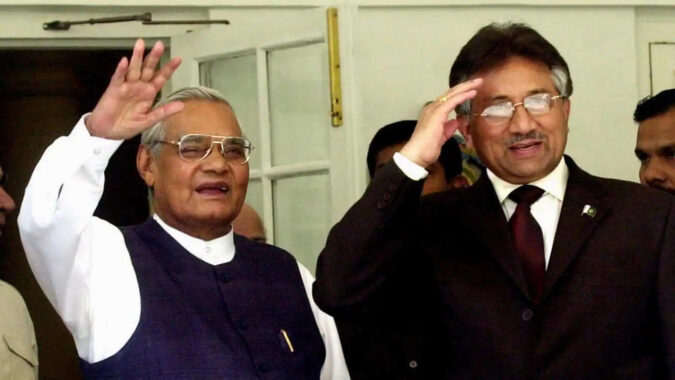While he will still be remembered most here for his 1999 Kargil adventurism, a chastened Musharraf meant that the 2 sides arrived at a ceasefire understanding in 2003, facilitating then PM AB Vajpayee’s visit to Pakistan for the Saarc summit next year.
Musharraf’s efforts to seek international legitimacy also saw a reduction in violence during that period and, in 2006, his 4-point peace formula for Kashmir that he arrived at with Vajpayee’s successor Manmohan Singh, bringing India and Pakistan tantalisingly close to a “non-territorial’’ solution.
Musharraf effectively lorded over Pakistan for 10 long years, from the time he was appointed army chief by then PM Nawaz Sharif in 1998 to his resignation as president in 2008.
While Sharif had appointed him army chief, Musharraf lost no time in undercutting the PM’s authority by ordering the Kargil infiltration just 3 months after India and Pakistan signed the Lahore Declaration during Vajpayee’s visit to Pakistan in 1999.
The Declaration, along with the Simla Agreement, continues to provide the basis for the 2 countries to resolve all issues bilaterally. The same year Sharif was overthrown in a military coup by Musharraf.
As former Indian ambassador to Pakistan Sharat Sabharwal says, Musharraf leaves behind a mixed legacy.
“It can be divided into 2 phases. The first, after he had taken over as chief of army staff, was marked by extreme adventurism. Major acts of terrorism like the IC 814 hijacking and the attack on Parliament were carried out under his watch. Later, because of 9/11 and pressure from the West, he adopted a more reasonable position. This was when violence went down and there were back-channel talks,” says Sabharwal.
Musharraf’s grandstanding was also seen as one of the reasons for the Agra summit debacle in 2001, just before which he had officially appointed himself president. The invite itself by the Vajpayee government to Musharraf for the summit – barely 18 months after the IC814 hijacking – offers quite a contrast to how the NDA government under PM Narendra Modi has chosen to deal with Pakistan with its terror-and-talks-can’t-go-together policy.
Just before the summit, Musharraf even met Hurriyat leaders at the Pakistan high commission and promised them moral and political support. Years later, in 2014, the Modi government effectively drew a red line for any bilateral engagement by calling off then foreign secretary’s visit to Islamabad because the Pakistan high commissioner here had held a meeting with the separatists just before the visit.
This was also the reason the Indian government insisted on calling the 10-point dialogue process launched in 2015 comprehensive `bilateral’ dialogue and not just, as Pakistan initially wanted, comprehensive dialogue.
Despite his peace initiatives, Musharraf in the fullness of time will be remembered more for dragging India into the Kargil war than for his 4-point Kashmir formula. As Sabharwal says, the formula was an important initiative and there was interest on both sides to move forward.
It was possibly the first time that the 2 countries had almost reached an agreement for a non-territorial solution to the Kashmir issue. Musharraf resigned in 2008 after his run-in with the judiciary and the peace formula is now no more than a subject of academic discussion.
